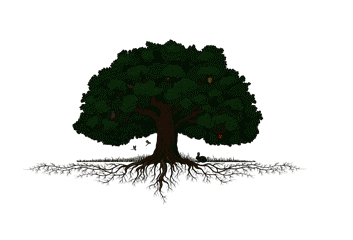Tatarian Maple
The Tatarian Maple is a compact, exceptionally hardy and low maintenance accent tree. The tree will display showy red samaras in late summer. Fall colours are vibrant, and leaves often remain on the tree well into winter. Interestingly, the tree will often grow wider than it is tall. The trees trunk is a striking light grey with black markings.
| Common Name |
Tatarian Maple |
|---|---|
| Latin Name |
Acer tataricum |
| Form |
Round |
| Life Span |
75+ |
| Growth Rate |
Medium |
| Mature Height |
7.5m |
| Mature Spread |
7.5m |
| Flower Colour |
White |
| Fragrance |
Insignificant |
| Fall Colour |
orange ,red ,Yellow |
| Soil Preference |
Widely adaptable |
| Exposure Preference |
Full sun ,Partial shade |
| Cold Hardiness Zone |
Zone 3a |
| Special Attributes and Considerations |
The Tatarian Maple is eye catching year around and should be planted in a prominent location where it can be admired by all whom pass it by. |
| Folk Lore |
The Tatarian Maple grows natively from South Eastern Europe, across Southern Russian and all the way East into Japan. The tree has long been naturalized in the Eastern United States. |
| Available Sizes |
50mm |
Related products
American Elm
American Elms are a large, long lived, stately tree. They are considered amongst the most beautiful and graceful trees that can be grown in the prairies. You will positively enjoy how their long slender branches gently sway in a breeze. Their leaves turn a golden yellow in the fall. American Elms are the trees that magnificently shade both North and South 1st Street in Medicine Hat with their cathedral-like ceiling of branches. They are exceptionally hardy and tolerant of even the most harsh planting site.
Black Walnut
Black Walnut Trees are a relatively rare tree for Southern Alberta but they have long been successfully grown in Medicine Hat. They make excellent shade trees and offer a splendid dappled shade with their loose open canopy. As a delicious autumn treat they produce large bounties of rich tasting nuts. They are low maintenance and exceptionally pest and disease resilient. They produce a brilliant fall show of bright yellow leaves. All and all we can not say enough good things about the Black Walnut tree as a consideration for anyones yard with appropriate space.
Box Elder
The Box Elder is a native tree that can often be found growing along streams and rivers. Some folks may know this tree as a Manitoba Maple. The tree is exceptionally drought and cold tolerant. A Box Elder can thrive in the most unforgiving location. Displaying plenty of character they often grow with gnarled and twisted branches. As the wood is weak and females will drop samaras, the Box Elder is best suited as a shade tree in a large yard or as a shelter belt tree in a rural setting.
Dropmore Linden
The Dropmore Linden is hybrid between the native American Linden and the European Little Leaf Linden. This breeding resulted in a regal tree fit to grow in the most discerning grounds. The tree grows with a strong central leader and a trunk with substantial girth. Leaves are densely growing, dark green and heart shaped. In early summer the tree will burst into colour with clusters of exceptionally fragrant yellow flowers. The tree is an excellent source of nectar for honey bees. The tree has a long history of being the most prairie hardy Linden and is to be considered a low maintenance selection.
Golden Willow
The Golden Willow is a hardy shelter belt tree that grows with a round form and slender drooping branches. The tree will grow to a large stature and tends to prefer a low canopy. As implied with it’s name, young stems are adorned with a beautiful yellow hue. The tree grows with glossy green, narrow (lanceolate) leaves. In autumn the leaves will turn golden yellow. As the tree ages the trunk’s bark will become deeply furrowed. The tree is typically found growing in a multi-trunk form, how ever we also have single trunk selections.
Green Ash
The Green Ash is a time tested and true tree for the prairies. They are amongst the hardiest of trees for our region. The tree boasts glossy dark green leaves that are pinnately compound with five to nine large leaflets. Autumn turns these leaves a golden yellow. The tree has greyish brown bark with interlacing furrows and ridges that produce a distinctive diamond pattern. Green Ash are cold, drought and urban tolerant making them widely suitable for any application. Green ash are native to South Eastern Alberta and have have been planted in our parks and yards since the very beginning.
Laurel Leaf Willow
The Laurel Leaf Willow is an extremely hardy, large sized tree that is native to Northern Europe. It is noted for having a rounded form, dark green glossy leaves and twisted trunk bark. It produces catkins that are golden yellow in colour. The tree is normally allowed a low canopy and is perfectly content in wet sites. Laurel Leaf willows are very eager to leaf out in the spring and reuctant to drop their leaves in the fall.
Princess Kay Plum
The Princess Kay Plum brings beauty to any yard it grows within. The tree explodes with a brilliant display of precocious double white flowers in early spring. The leaves are dark green and transition to yellow / red in the fall. The tree is very compact making it a perfect addition to smaller sites. Princess Kay Plums will only grow a tiny amount of fruit so they considered to be very neat and tidy. The tree is cold hardy and makes a fine year around accent tree.














